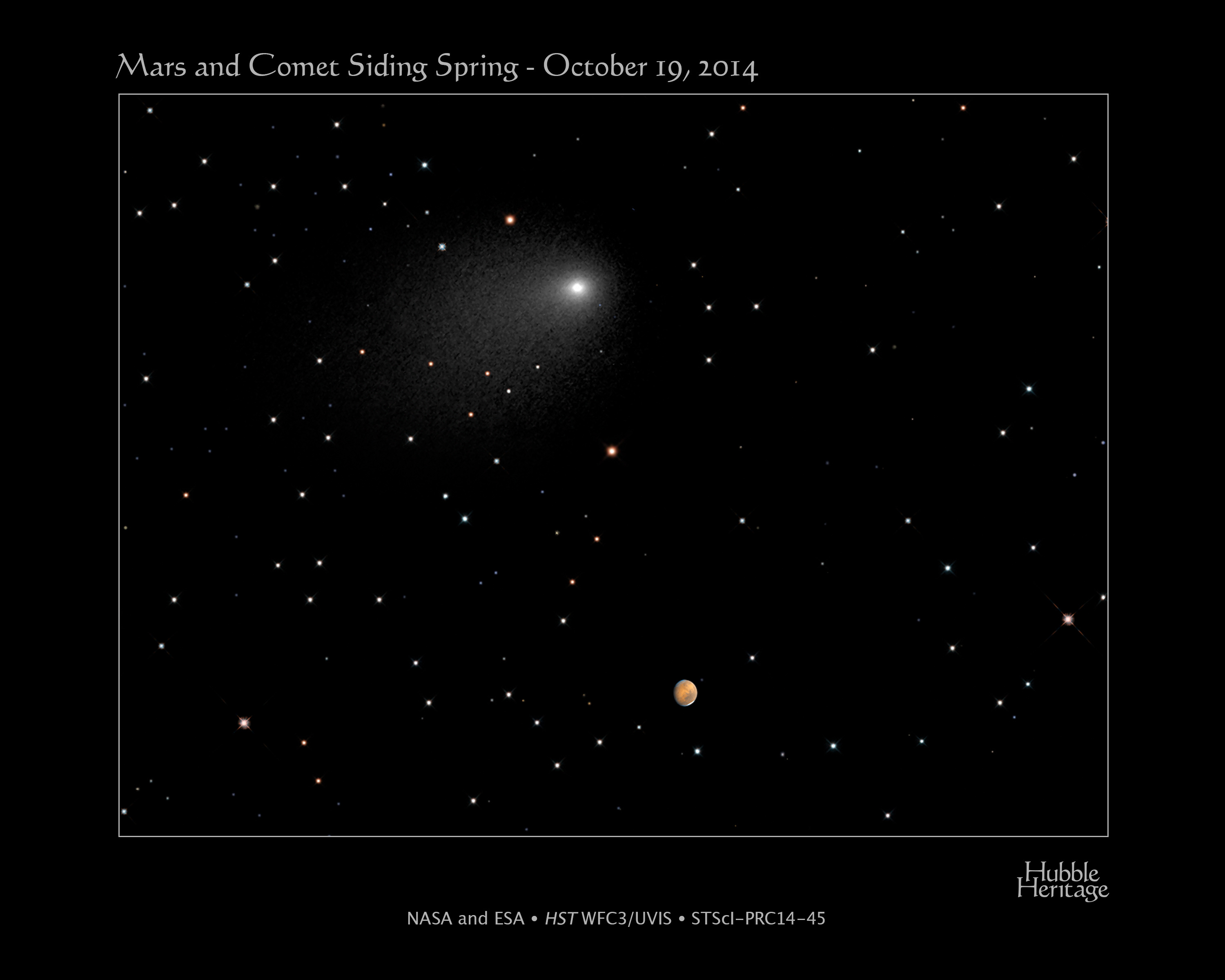C/2013 A1 Siding Spring

Overview
On Oct. 19, 2014, The nucleus of comet C/2013 A1 Siding Spring missed Mars by about one-third of the distance between Earth and Earth's moon or one-tenth the distance at which any identified comet has flown past Earth. That presented a unique science opportunity for the five orbiting spacecraft and two rovers at the Red Planet.
The comet approached Mars almost head-on as the planet traveled on its own orbit around the Sun, so they passed each other at an enormous velocity—some 35 miles (56 kilometers) per second. But the comet had such a large coma that Mars traveled through high-speed dust and gas particles for hours. The orbiting spacecraft took shelter behind Mars, but they also used their instruments two capture information about a rare close interaction between a comet and a planet.
Comet Siding Spring fell from the Oort cloud, an immense spherical shell of dormant comets that envelopes the rest of the solar system. To get a feel for how far away it is, consider this: Voyager 1, which has been traveling through space since 1977, is much farther away than any of the planets and has even emerged from the heliosphere, the enormous bubble of magnetism and ionized gas that the Sun emits. But it will take the spacecraft another 300 years to reach the inner "edge" of the Oort cloud and, at its current speed of a million miles a day, some 30,000 years more to finish passing through it.
Occasionally, some gravitational influence-possibly from a passing star-nudges a comet loose from this incredibly vast and distant depository, and it falls toward the Sun. That is what must have happened to Siding Spring a few million years ago. It has been falling all this time toward the inner solar system, and it's going to give us just one shot at studying it. According to current estimates, its next visit will be in about 740,000 years.
Discovery
Discovered Jan. 3, 2013 at Siding Spring Observatory, Australia.
How This Comet Got Its Name
C/ indicates that it is a non-periodic comet. And 2013 A1 indicates that it was the first comet discovered in the first half of January 2013. Siding Spring is the name of the observatory where it was discovered.




